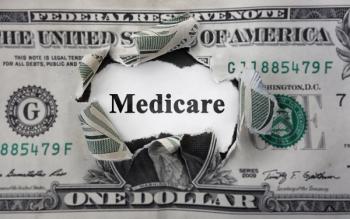
Response: Full practice authority for nurse practitioners needed to address physician shortage
We are facing a primary care crisis in this country that existed before COVID-19, but which has most certainly been exacerbated by it.
I read with interest Medical Economics’
Every day, NPs work alongside physicians who support full and direct access to NP-delivered care. Unfortunately, PPP is an outlier organization, working to divide NPs and physicians rather than unite us to better serve patients and our nation’s health care system. We as NPs want our physician colleagues to know the facts.
We are facing a primary care crisis in this country that existed before COVID-19, but which has most certainly been exacerbated by it. The pandemic has shone a bright light on the impact poor health care access has on underserved communities — and all communities. Today, some
Full practice authority (FPA) strengthens patients’ access to high-quality care.
The physician workforce is increasingly gravitating toward medical specialties and resides most frequently in urban centers. In contrast, nearly 90% of NPs are prepared in primary care, and data shows they are more likely to practice in rural areas than are physicians. After adopting FPA, states like Arizona, Nevada and North Dakota saw a significant increase in the number of NPs licensed in the state and better retention rates for NP graduates who remained in the state after graduation. In fact, Arizona saw an increase of more than 70% of rural-located NPs within five years of adopting FPA.
Fifty years of research confirms the high quality of NP-delivered health care.
The evidence is in, NP-delivered care is associated with improved access to care, lower health care costs and fewer avoidable emergency room visits and hospital readmissions compared to other health professions. A preponderance of evidence based on more than half a century of
Rural communities need help – and NPs are prepared to deliver it.
Patients living in rural communities are
Trusted health policy advisors agree: It’s time to enact FPA nationwide.
While PPP’s representatives work overtime to fight FPA, the National Academy of Medicine (NAM) — the nation’s most respected medical policy research organization and adviser to the U.S. government — recently issued a renewed call for policymakers to empower NPs to work to the top of their scope. In the words of William M. Sage, MD, JD, who served on the authoring committee of the NAM’s report,
Nurse practitioners couldn’t agree more with Dr. Sage’s assessment: It’s time to break the health care glass ceiling. It’s time to put patients first — and it’s time to enact FPA nationwide. Patients need access to care and our country needs a health care system that works for all of us. We invite our physician colleagues to work with us in expanding patient access to care — in rural, urban and suburban communities. Together, we can bolster primary care access, save lives, combat health care disparities, address chronic disease and reduce burnout for all health care providers.
April N. Kapu, DNP, APRN, ACNP-BC, FAANP, FCCM, FAA is president of the American Association of Nurse Practitioners® (AANP), the largest professional membership organization for nurse practitioners of all specialties.
Newsletter
Stay informed and empowered with Medical Economics enewsletter, delivering expert insights, financial strategies, practice management tips and technology trends — tailored for today’s physicians.



















